EOMONTH Function – Last Day of Month (Excel, VBA, G Sheets)
Written by
Reviewed by
Download the example workbook
This tutorial demonstrates how to use the EOMONTH Function in Excel to find the last day of the month, n months away.
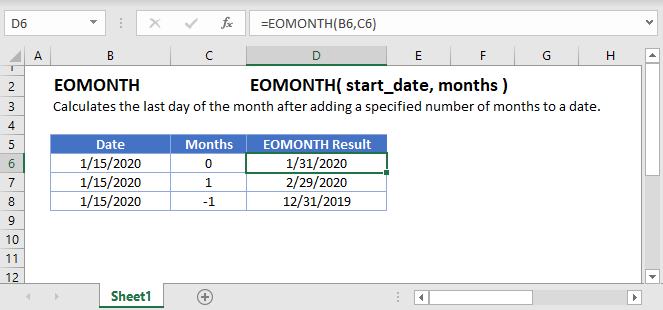
How to use the EOMONTH Function
Current Month
The EOMONTH Function takes a date and returns the last day of a month:
=EOMONTH(B3,0)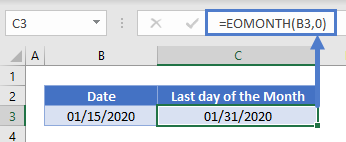
Previous Month
You can also add (or subtract) n months to the start date to get the last day of another month. This example will return the last day of the previous month:
=EOMONTH(B3,-1)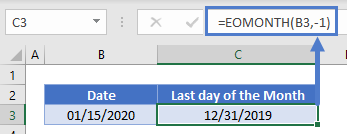
Number of Days in Month
By using the DAY Function, you can calculate the number of days in the month:
=DAY(EOMONTH(B3,0))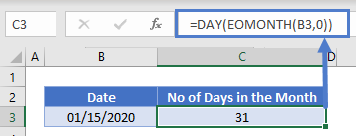
The DAY Function returns the day number of a date. By using EOMONTH, we can get the last day of the month and the DAY function then returns the corresponding day number.
First Day of Month
By adding 1 to the result of the EOMONTH Function, you can get the first day of a month:
=EOMONTH(B3,-1)+1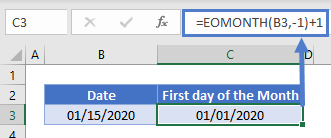 Note: in Excel, dates are stored as serial numbers where each number represents a day, so adding 1 to a date, will add 1 day.
Note: in Excel, dates are stored as serial numbers where each number represents a day, so adding 1 to a date, will add 1 day.
EOMONTH in Google Sheets
The EOMONTH Function works exactly the same in Google Sheets as in Excel:

EOMONTH Examples in VBA
You can also use the EOMONTH function in VBA. Type:
application.worksheetfunction.eomonth(start_date,months)Running the following VBA statements
Range("B2") = Application.WorksheetFunction.EoMonth(Range("A2"), 0)
Range("B5") = Application.WorksheetFunction.EoMonth(Range("A5"), -1)
Range("B8") = Application.WorksheetFunction.EoMonth(Range("A8"), -1) + 1Will produce the following results
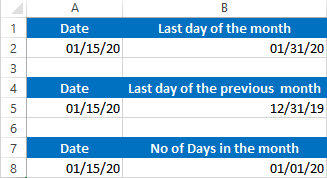
For the function arguments (start_date, etc.), you can either enter them directly into the function, or define variables to use instead.


